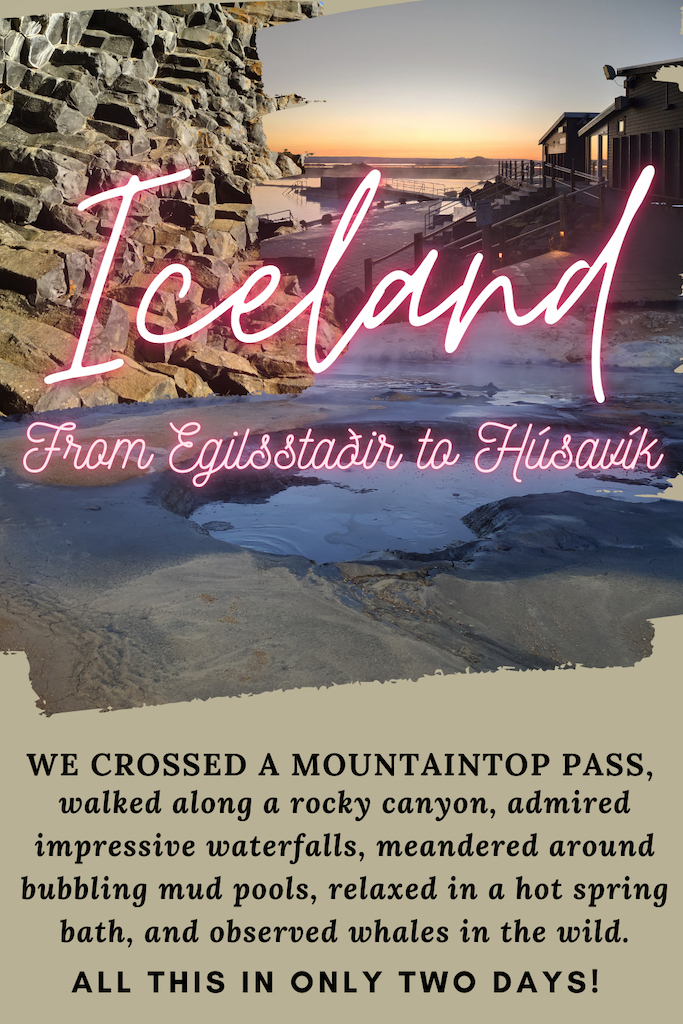Here is a link for our full 12-day itinerary from Reykjavík.
We are on the fifth day of our journey, beginning our ascent towards the island’s north.
If you are curious to know the beginning of our journey, here are the links:
- Day 1 and 2, the Golden Circle, click here 😊
- Day 3 and 4, from Hella to Höfn, South Iceland, click here 😊
- Day 5, De Höfn à Egilsstaði, click here 😊
Best things to do in Iceland
Here we are in the heart of the matter — what to do when you are in Iceland?
Well, you are spoiled with choices, and that’s good. 😃 To help you pick, below you will find some places I visited and the activities I’ve tried. All you have to do is make your choice.
My personal opinion:
😍 Do not miss
😃 Go if you have time
😐 Not very interesting
😭 Unfortunately, we couldn’t do it
Day 6: From Egilsstaðir to Lake Myvatn – 284 km
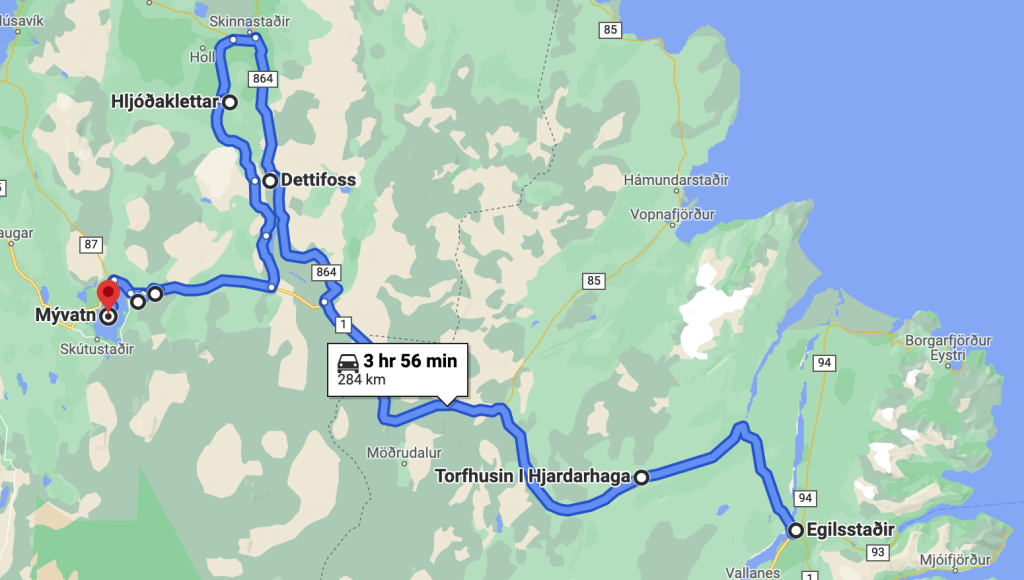

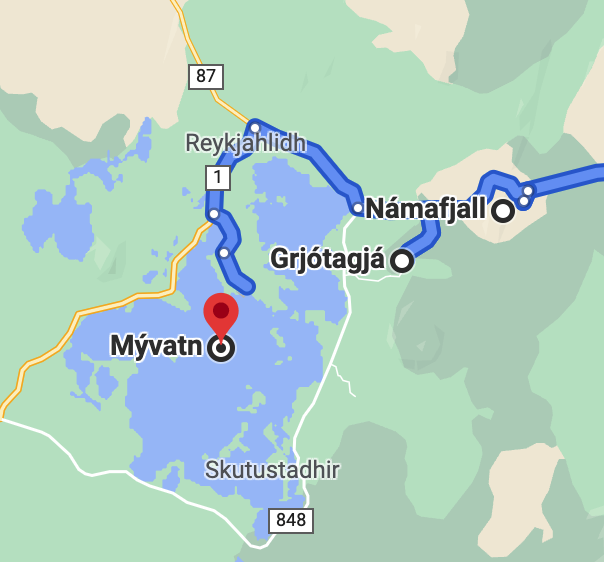

The stops we planned for the day
- The turf houses of Hjardarhaga farm
- Distance from Egilsstaðir 44 km – 35 min
- Visiting time 15 min
- Dettifoss et Selfoss Waterfalls
- Distance from Þjóðvegur 116 km – 1h30
- Visiting time 1 hour
- Echo Rocks in Jökulsárgljúfur Canyon
- Distance from Dettifoss 44 km – 43 min
- Visiting time 1 hour
- Grjótagjá cave
- Distance from Hljóðaklettar 66 km – 50 min
- Visiting time 30 min
- Namafjall Hverfjall craters
- Distance from Grjotagja 6 km – 10 min
- Visiting time 30 min
- Lake Mývatn – Mývatn hot springs
- Distance from Námafjall 16 km – 20 min
- Stop for the night
After a good night’s sleep, we set off for another long day of driving, punctuated by promising breaks.
😍 The turf houses of Hjardarhaga farm
I must admit that we discovered these turf houses by chance. They are, in fact, on the border of the road.
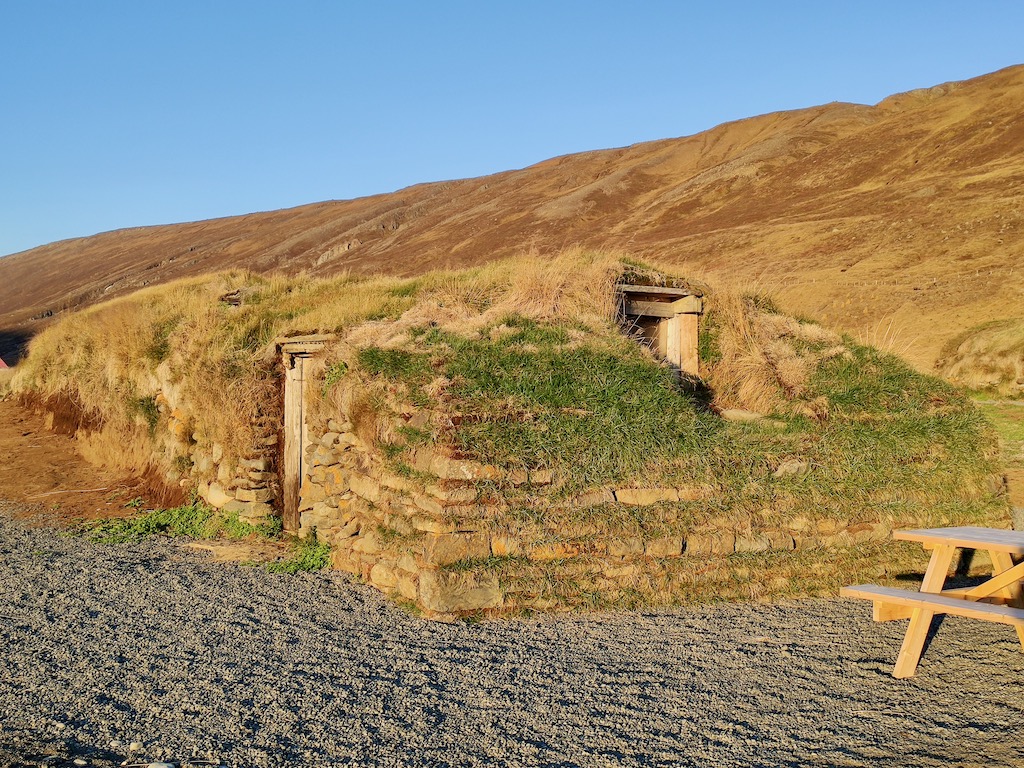

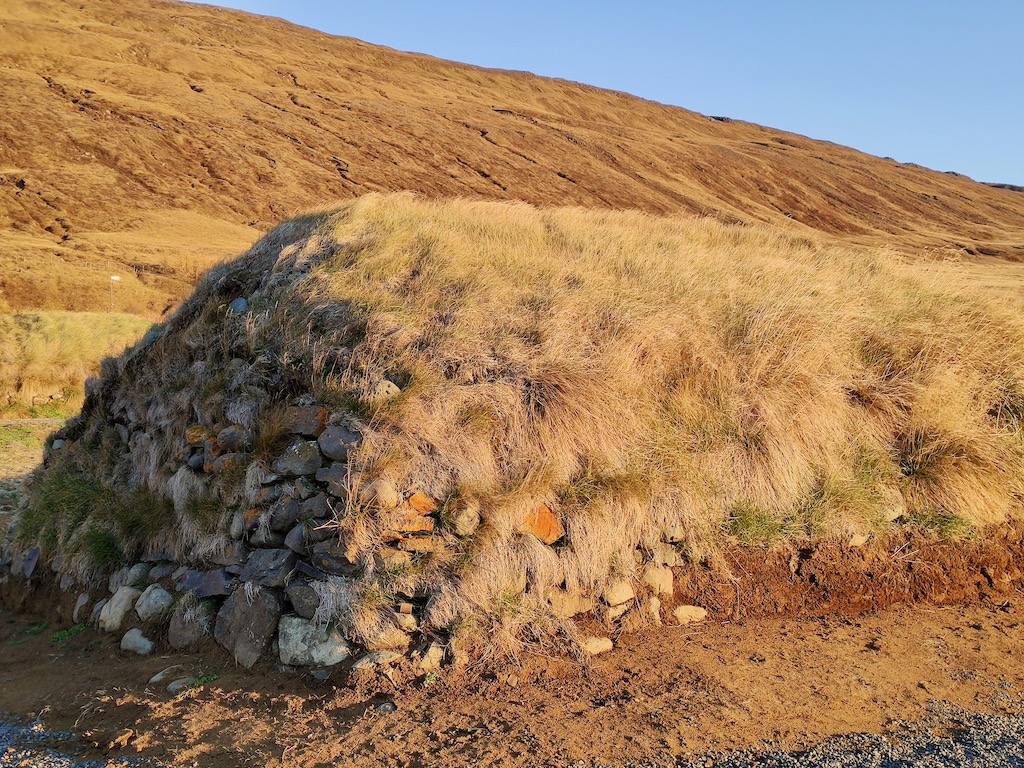

There were six buildings here for centuries, most of which were still in use in the 1970s.
Today, only two sheepfolds are still standing, the rest being demolished to build the road.


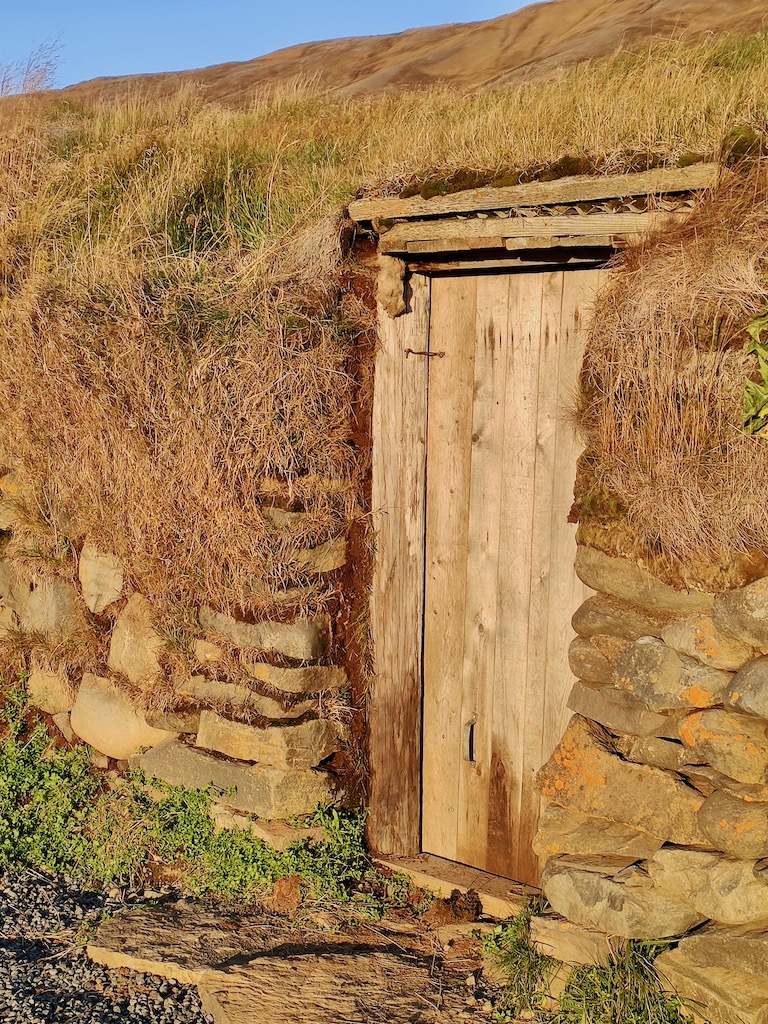

The style and materials used are traditional; grass and wood, with a brush-lined roof under a grass cover. Besides, we were amazed by the pleasant temperature inside the houses.
And to add to the beauty of the place, we were able to appreciate the warm and enveloping light of the sunrise.
If you want to know more about turf houses, click here.
Iceland never ceases to amaze us. We left the mountain for our next destination, a desert region.
😍 Dettifoss et Selfoss Waterfalls
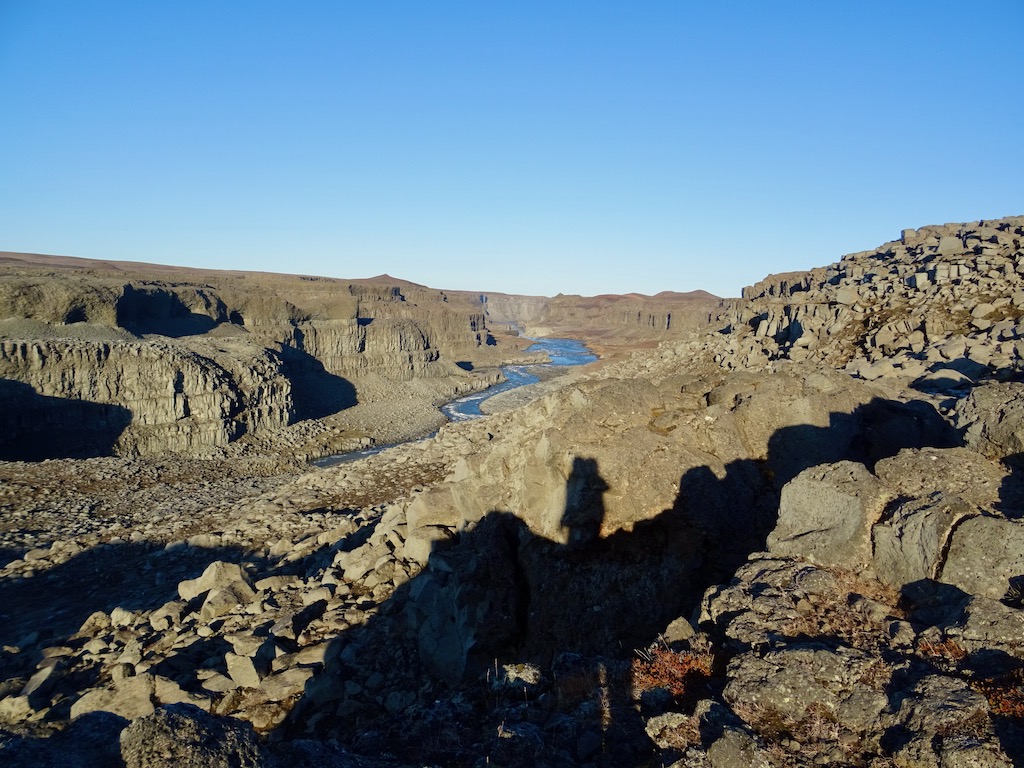

They are located along the Jökulsárgljúfur Canyon, the largest and most spectacular in Iceland. It is 25 km long and 500 m wide, and in some places can reach a depth of 100 m. Geologists believe it was formed after the Ice Age by the fury of the Jökulsá River, which originates on the north side of the Vatnajökull glacier.
There are several waterfalls on Jökulsárgljúfur. The southernmost is Selfoss, 10 m high and extensive; followed by Detifoss, 45 m high and 100 m wide; Hafragilsfoss, 27 m high; ending with Réttarfoss in the north, 7 m high.
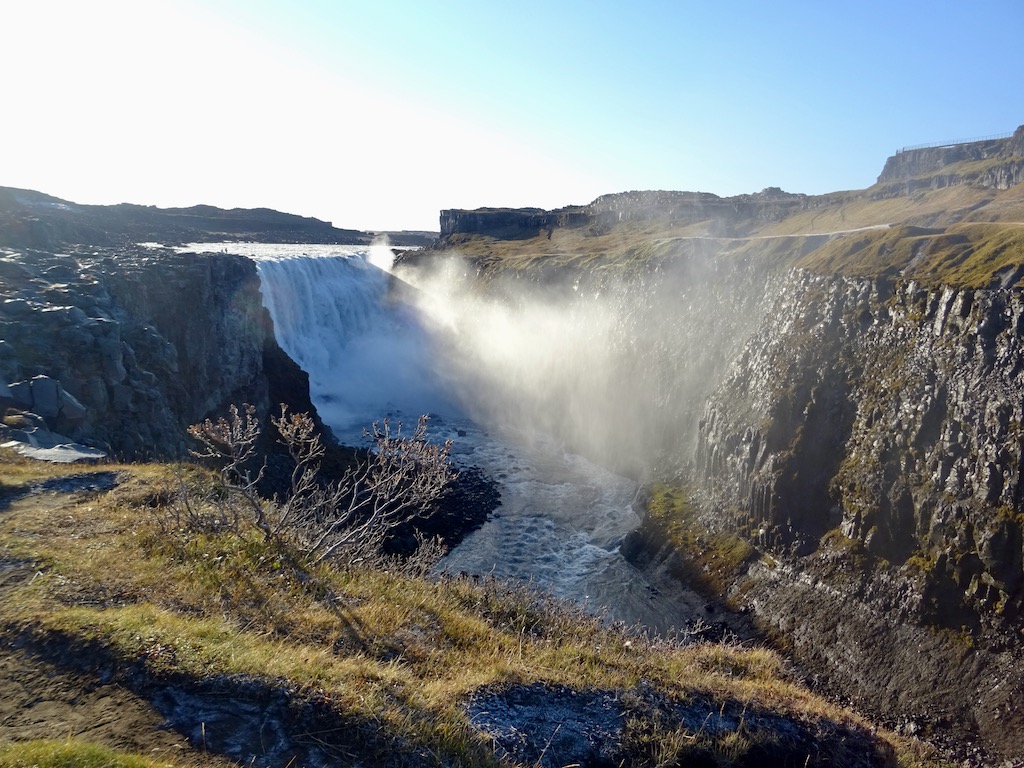



To get to Dettifoss, you have to leave the main road through tracks. We decided to go around the canyon (see map above) to discover both sides, but frankly, I advise against it. The “F-road” east of the canyon is really endless and depressing. It is preferable to make the one-way return by the west, which is tarmacked and on which one can find a path, situated near the parking lot, that leads to Selfoss.
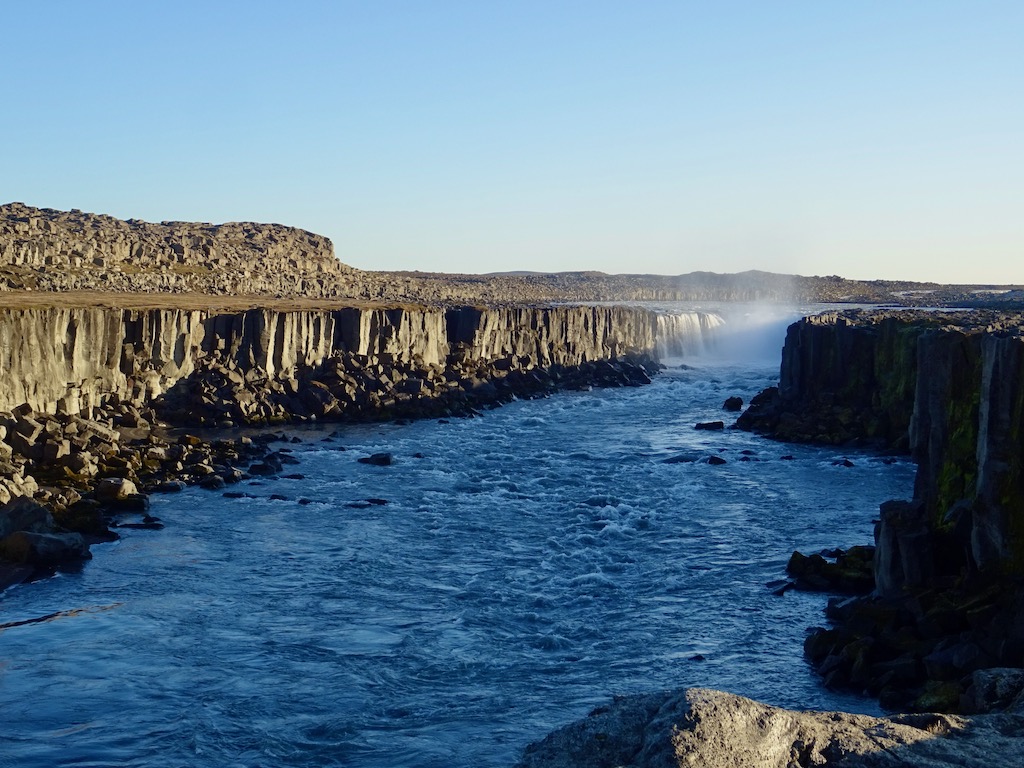

I would never get tired of the loud noise of the water and the icy spray.
😍 Rock Echoes in Jökulsárgljúfur Canyon
Hljóðaklettar, the Rock Echoes, is located in Fjöllum, along the same canyon as the previous waterfalls. These columnar basalt rock formations came from an ancient volcanic chain 11,000 years ago.
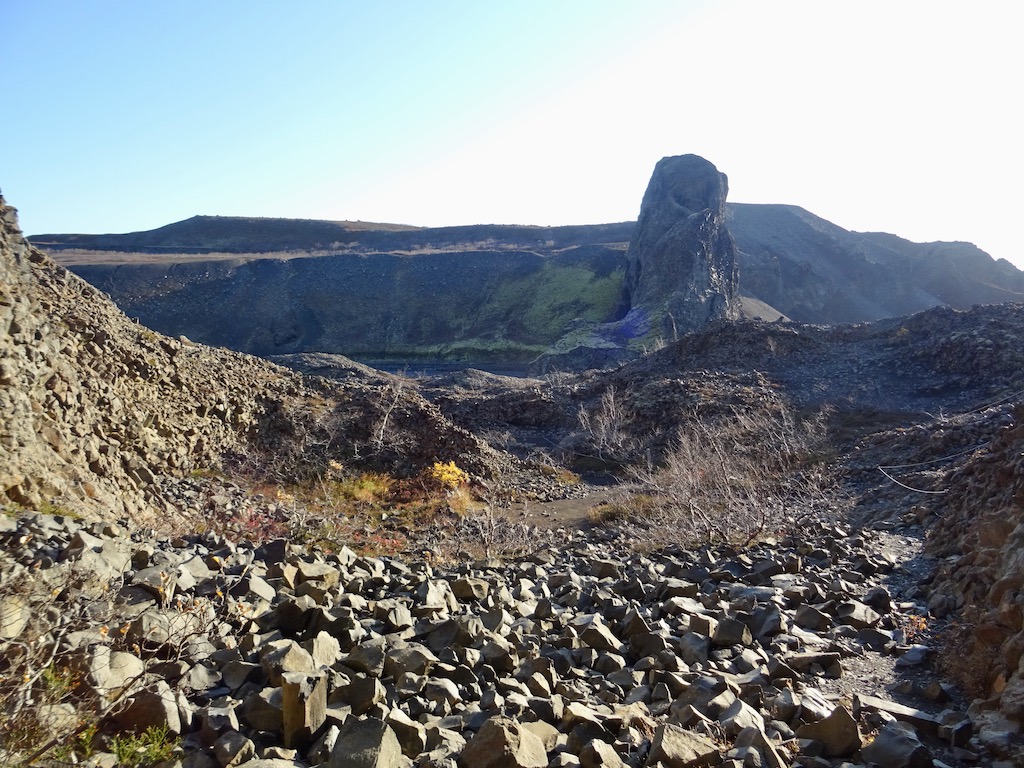



The place is so named because when you stand in the middle and close your eyes, you cannot figure out where the sound of the Jökulsá River is coming from. All the surrounding noises ricochet off the rocks and spread in all directions.
The same if you shout; your voice will resonate in all directions, from wall to wall, again and again.
I would have liked to experience it, but since walkers arrived when I was about to start, I didn’t dare!


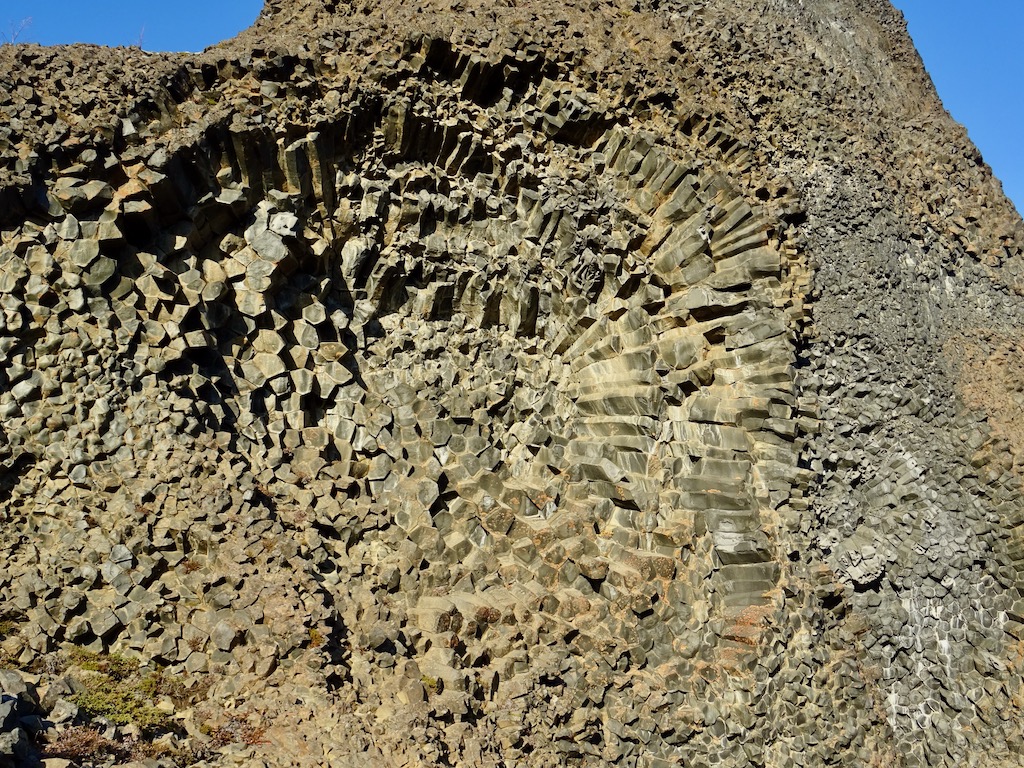

A path winds through the different formations, from caves to massive peaks. And always, these drawings of stones with such precise shapes.




After a long morning drive on a bumpy road, a hike in this grand canyon was welcome. The highlight has been the discovery of Selfoss.
As our next stop was close and we weren’t really in a hurry to get back in the car, we took the time to savor this moment.
It was a picture-perfect day and the radiant sun warmed us up, making us forget the cold temperatures of October. So far, I must admit that we had been blessed with good weather, and our excursions were all the more pleasant.
But it was time to move!
😃 Grjótagjá cave


This natural site was a public bathing place until 1975.
From then to 1984, underground lava flows raised the water temperature to 60 degrees. Today it is back down to 45 degrees. However, it is forbidden to swim there.
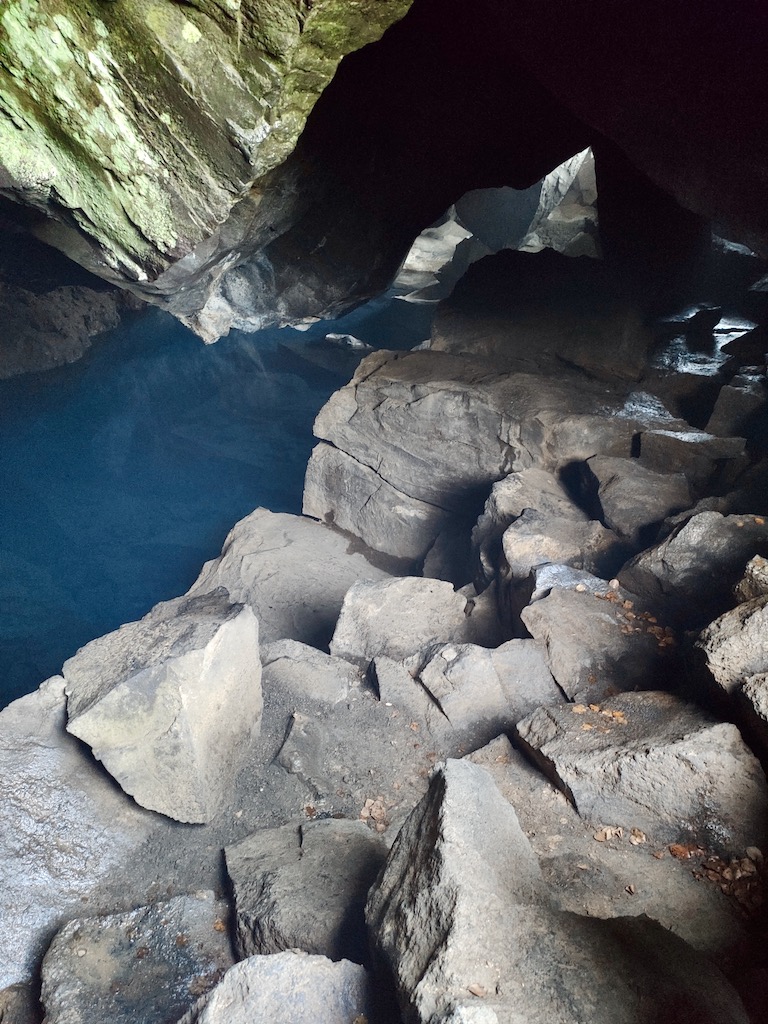

Our penultimate stage awaits us. We were very curious to see the Námafjall Hverfell craters, which is said to be an area of boiling and smelly mud.
A strange description of the place!
😍 Námafjall Hverfell craters
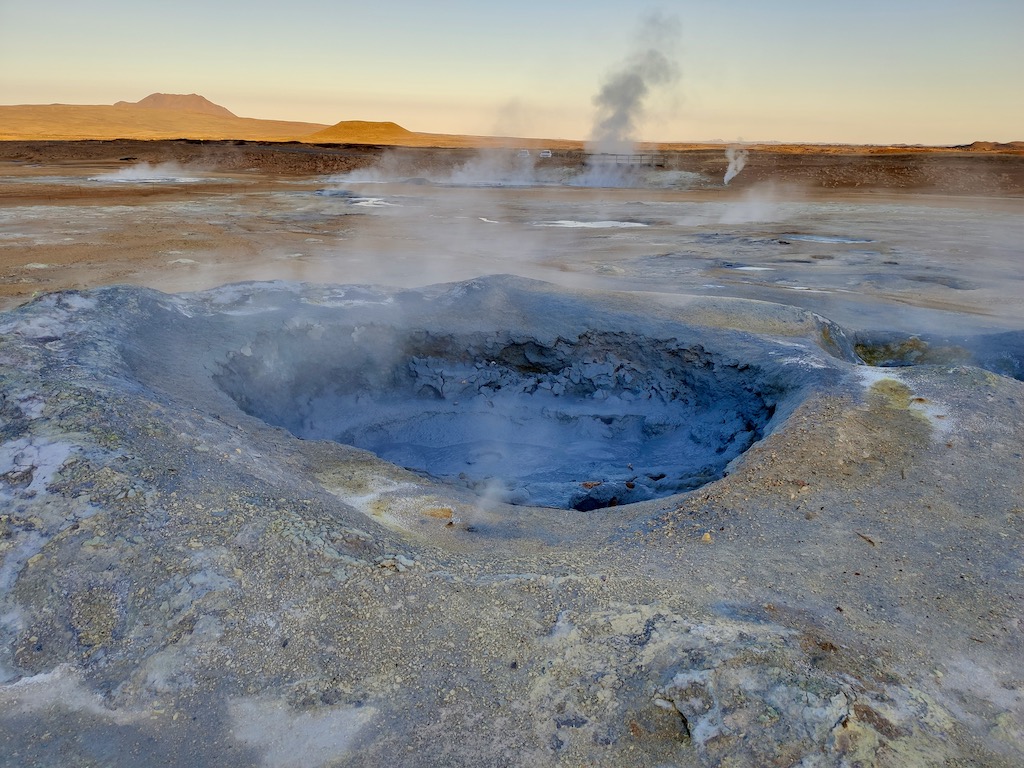

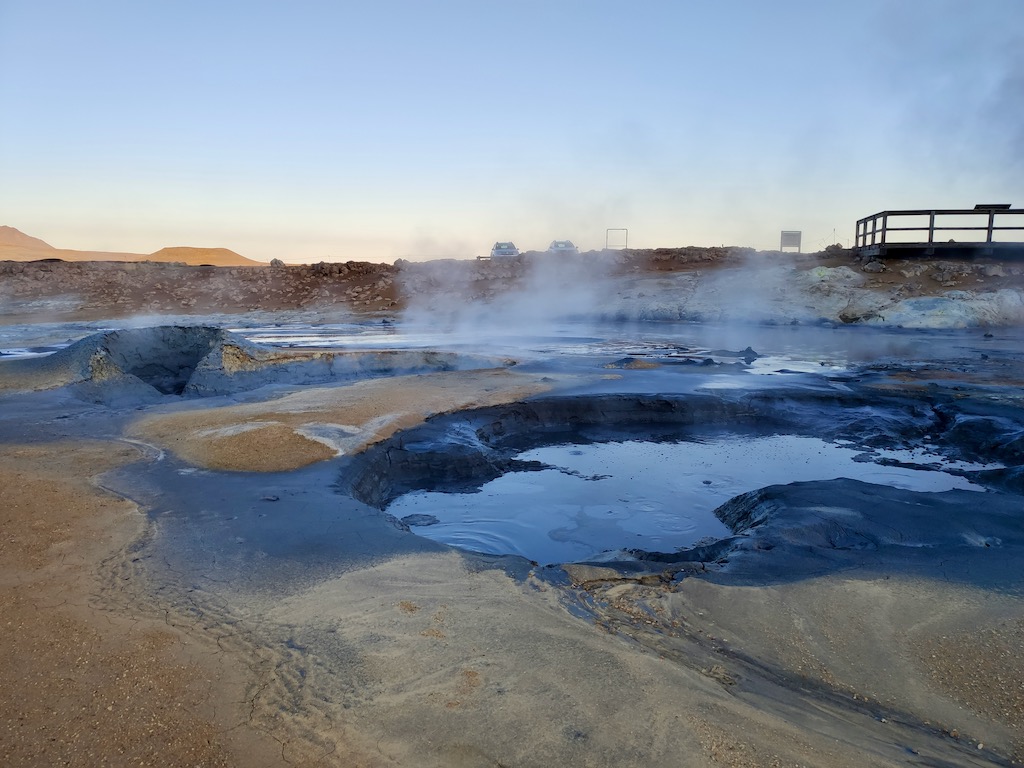

It is a high-temperature zone featuring steam vents and mud potholes. At 1,000 meters deep, the heat exceeds 1,000 degrees. The steam is accompanied by gases such as hydrogen sulfide, which gives the hot springs their characteristic smell of rotten eggs.
The previous description makes sense now.
The hot springs result in significant sulfur deposits. These sulfur mines were once exploited for the production of gunpowder.
The most surprising thing is that you can walk freely in the middle of these bubbling pools. It feels like being on another planet.
😍 Lake Mývatn – Mývatn hot springs


Mývatn is a volcanic lake. What makes the place famous is the Natural Baths of Mývatn, an artificial lagoon heated with the natural hot waters rich in minerals, known for their beneficial properties for health.
The city created this space in the continuity of Reykjavik’s “Blue Lagoon,” a very famous tourist natural bath of the capital.


Suffice to say that when we arrived in the village, we had only one idea in mind: check in our room, get our bathing suits, and immerse in the hot water bath sipping a cocktail while admiring the sunset.
And that’s what we did, and it ended our day like a dream. The ideal break after the days of travel we had just done.
Day 7: From Lake Myvatn to Húsavík – 56 km
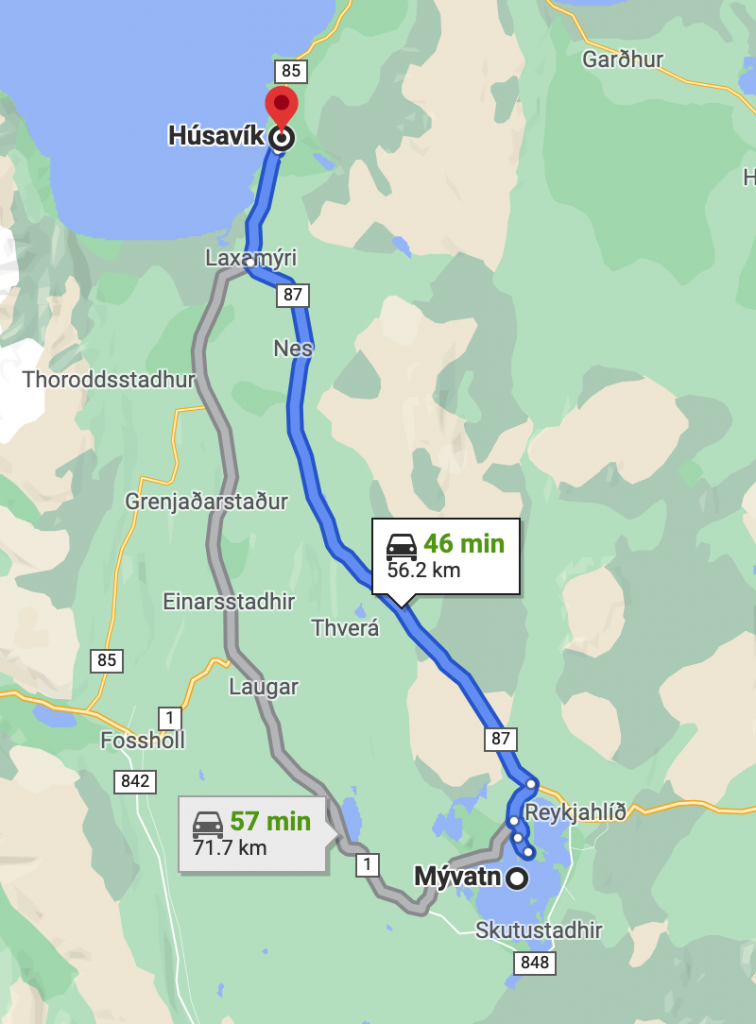

The stop we planned for the day
- Húsavík “The Whale Spotting Capital of the World”
- Distance from Lake Mývatn 56 km – 46 min
- Whales watching 10:00 – 13:00
- Stop for the night
Today, we leave for a short drive but an emotion-packed day. Another unforgettable memory!
Húsavík is a quaint fishing village whose most famous building is the wooden church Húsavíkurkirkja, built in 1907. But the reason for our visit is this specific activity which it is known worldwide for.
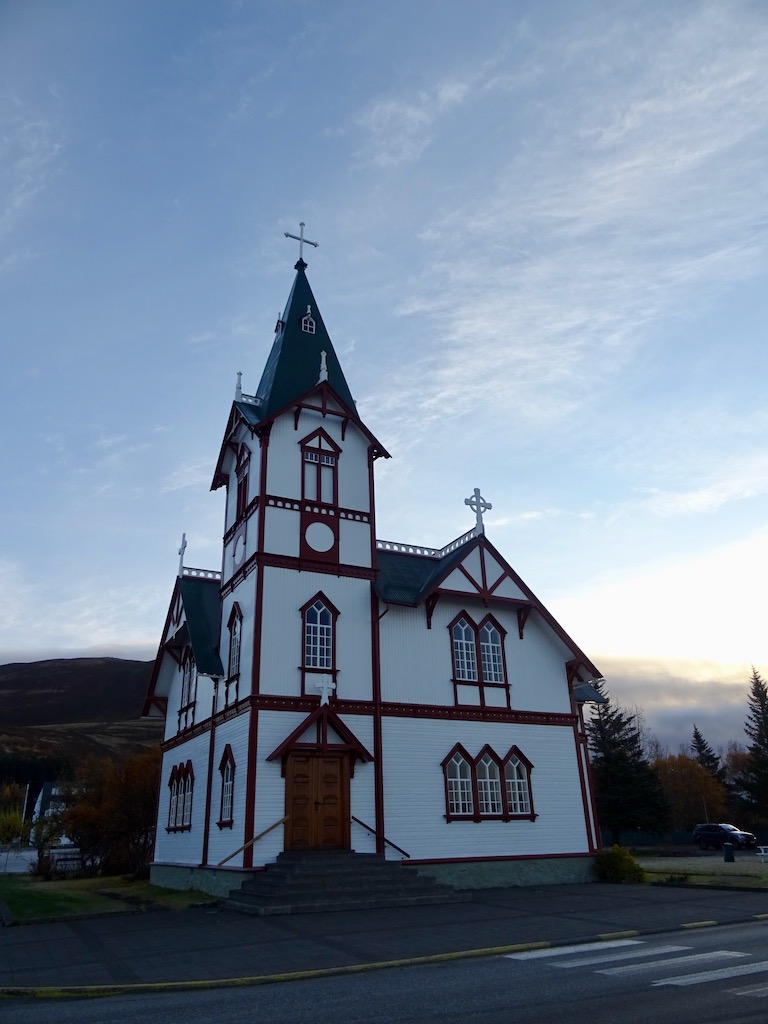



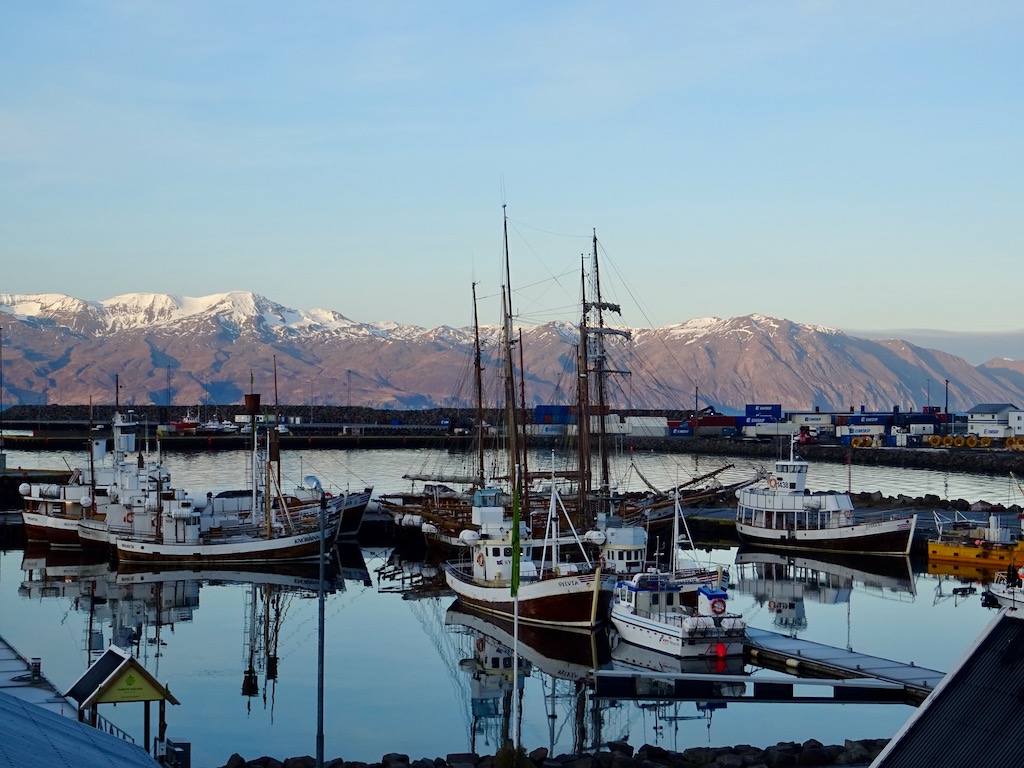



A sea trip to discover whales aboard a traditional Icelandic oak boat.
Let me tell you, we were excited! We had been asked to come in advance so that we had time to equip ourselves for the expedition. Because what we didn’t know, but which made us happy, was that we were going to spend about 3 hours on deck.
No heated cabin to enjoy coffee while waiting for the arrival of the whales. No, we were going to be the lookouts, and our mission was to scan the sea for the typical jet of water that signals their presence.
We put on our fantastic dry suits and boarded.
And off we go!


We were warned that the best time to see these cetaceans was May to September. So we weren’t sure we could see any. Our guide, thankfully being stubborn, did not want us to return until we had exhausted all our hopes of success. And it was after three hours of navigation and determination that we were finally able to admire one up close.
It was an incredible moment!
It was, therefore, delighted and frozen with the cold that we returned to port, we sat curled up on the deck to protect ourselves from the wind — which in our enjoyment we had forgotten about until then.
Final word
Each day is a day of discoveries!
Honestly, I’m glad we made it to Húsavík. When we planned our trip, we weren’t sure if it was worth venturing so far to the northeast of Iceland. Because we drove a lot, do not rely too much on mileage. Even though most roads are in good condition, one can’t go fast. And if you take the F-road, the time lengthens considerably.
However, the reward is at the end of the road; we have explored so many beautiful places. We crossed a mountaintop pass, walked along a rocky canyon, admired impressive waterfalls, meandered around bubbling mud pools and fumaroles, relaxed in a hot spring bath, and observed whales in the wild.
All this in only two days!
